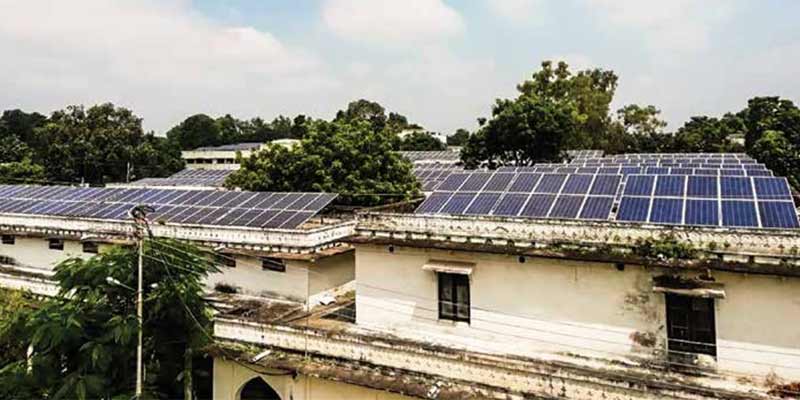- India
- Jan 15
Explainer - PM-Surya Ghar: Muft Bijli Yojana
• The Ministry of New and Renewable Energy (MNRE) has issued operational guidelines for implementing various components under the PM-Surya Ghar: Muft Bijli Yojana.
• The guidelines detail the implementation of two models for rooftop solar installations.
The scheme offers two alternative implementation models for the installation of rooftop solar plants for consumers:
i) The Renewable Energy Service Company (RESCO) model, where third-party entities invest in rooftop solar installations, allowing consumers to pay only for the electricity consumed without bearing the upfront costs.
ii) The Utility-Led Aggregation (ULA) model, where power distribution companies or state designated entities will install rooftop solar projects on behalf of individual residential sector households.
• Under this scheme component, Rs 100 crore corpus fund has been earmarked for Payment Security Mechanism (PSM) for de-risking investments in RESCO-based grid-connected rooftop solar models in the residential sector, which may be supplemented through other grants, funds and sources after due approval of the ministry.
PM Surya Ghar: Muft Bijli Yojana
• It aims to light up one crore households by installing rooftop solar equipment and providing up to 300 units of free electricity every month with a total outlay of Rs 75,021 crore.
• This ambitious scheme empowers households to harness solar energy by offering a substantial subsidy covering up to 40 per cent of the cost of installing solar panels on their rooftops. By enabling widespread adoption of solar power, the scheme is poised to benefit one crore households across the country.
Benefits of the scheme:
• Free Electricity for Households: The scheme provides households with free electricity by installing subsidised rooftop solar panels, significantly reducing their energy costs.
• Reduced Electricity Costs for the Govt: By promoting the widespread use of solar power, the scheme is expected to save the government an estimated Rs 75,000 crore annually in electricity costs.
• Increased Use of Renewable Energy: The scheme encourages the adoption of renewable energy sources, contributing to a more sustainable and environmentally friendly energy mix in India.
• Reduced Carbon Emissions: The transition to solar energy under this scheme will help lower carbon emissions, supporting India's commitment to reducing its carbon footprint.
Eligibility criteria
i) The household must be an Indian citizen.
ii) The household must own a house with a roof that is suitable for installing solar panels.
iii) The household must have a valid electricity connection.
iv) The household must not have availed any other subsidy for solar panels.
Model Solar Village
Under the ‘Model Solar Village’ component of the scheme, the focus is on establishing one Model Solar Village per district throughout India. This initiative aims to promote solar energy adoption and empower village communities to achieve energy self-reliance. An allocation of Rs 800 crore has been designated for this component, with Rs 1 crore provided to each selected Model Solar Village.
To qualify as a candidate village, it must be a revenue village with a population of over 5,000 (or 2,000 in special category states). Villages are selected through a competitive process and evaluated on their overall distributed renewable energy capacity six months after being identified by the District Level Committee (DLC).
The village in each district with the highest RE capacity will receive a central financial assistance grant of Rs 1 crore. Under the supervision of the DLC, the State/UT Renewable Energy Development Agency will oversee the implementation, ensuring these model villages successfully transition to solar energy and set a benchmark for others across the country.
Expected outcomes of the scheme:
i) Household Savings and Income Generation: Households will benefit from significant savings on their electricity bills. Additionally, they will have the opportunity to earn extra income by selling surplus power generated by their rooftop solar systems to DISCOMs. For instance, an average 3-kW system can generate over 300 units per month, providing a reliable energy source and potential revenue.
ii) Expansion of Solar Capacity: The scheme is projected to add 30 GW of solar capacity through rooftop installations in the residential sector, significantly contributing to India's renewable energy goals.
iii) Environmental Benefits: Over the 25-year lifetime of these rooftop systems, it is estimated that the scheme will generate 1,000 billion units of electricity while reducing CO2 emissions by 720 million tonnes, making a substantial positive impact on the environment.
iv) Job Creation: The scheme is also expected to create approximately 17 lakh direct jobs across various sectors, including manufacturing, logistics, supply chain, sales, installation, operations and maintenance (O&M), and other services, thereby boosting employment and economic growth in the country.
Manorama Yearbook app is now available on Google Play Store and iOS App Store

